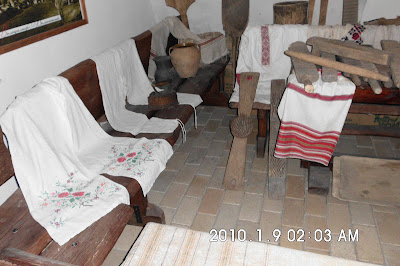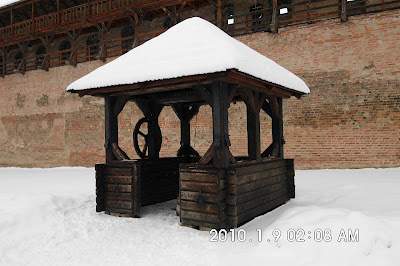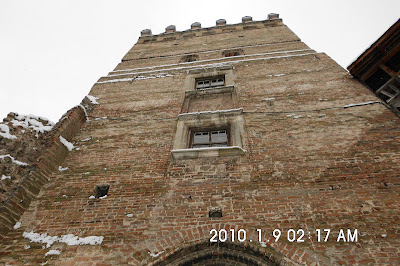Today, a friend of mine has given me magnificent photos of Lubart`s Castle in my native Lutsk.
She had an opportunity to visit it in winter.
So, I share them with you.
Have a look!
Lutsk High Castle, also known as Lubart's Castle, began its life in the mid-14th century as the fortified seat of Gediminas' son Liubartas (Lubart), the last ruler of united Galicia-Volhynia. It is the most prominent landmark of Lutsk, Ukraine and as such appears on the 200 hryvnia bill. Another city castle, built by the Czartoryski family starting from the 14th century, is now a ruin.
The Kievan town of Luchesk had a wooden wall as early as 1075, when Boleslaw the Brave laid siege to it for six months. Yury Dolgoruky failed to take Lutsk after a six-weeks siege in 1149. In 1255, the walls of Lutsk were stormed by Jochi's grandson Kuremsa.
The current castle, towering over the Styr River, was built mostly in the 1340s, although some parts of the earlier walls were used. It repelled sieges by numerous potentates, including Casimir the Great (1349), Jogaila (1431), and Sigismund Kęstutaitis (1436). It was there that the Lutsk Conference of 1429 took place, attended by Emperor Sigismund, Vasily II of Moscow, Jogaila, Vytautas the Great, and the voivode of Wallachia.
During the long reign of Vytautas, Lutsk Castle was further fortified to guard against artillery and gunfire. The principal entrance, now bricked in, was from the west and adjoined a bridge over outer moat. Three main towers, named after Lubart, Švitrigaila and the Bishop, were built up in the course of the 16th and 17th centuries.
The walls of the castle formerly enclosed St. John's Cathedral, the residence of the Grand Duke of Lithuania, and an episcopal palace. Of these buildings, only the Neoclassical palace of the bishops still stands.
On July 2, 1941 1,160 Jews were murdered within the walls of the castle.nThere is no monument or marker for this tragedy in the castle.
The Kievan town of Luchesk had a wooden wall as early as 1075, when Boleslaw the Brave laid siege to it for six months. Yury Dolgoruky failed to take Lutsk after a six-weeks siege in 1149. In 1255, the walls of Lutsk were stormed by Jochi's grandson Kuremsa.
The current castle, towering over the Styr River, was built mostly in the 1340s, although some parts of the earlier walls were used. It repelled sieges by numerous potentates, including Casimir the Great (1349), Jogaila (1431), and Sigismund Kęstutaitis (1436). It was there that the Lutsk Conference of 1429 took place, attended by Emperor Sigismund, Vasily II of Moscow, Jogaila, Vytautas the Great, and the voivode of Wallachia.
During the long reign of Vytautas, Lutsk Castle was further fortified to guard against artillery and gunfire. The principal entrance, now bricked in, was from the west and adjoined a bridge over outer moat. Three main towers, named after Lubart, Švitrigaila and the Bishop, were built up in the course of the 16th and 17th centuries.
The walls of the castle formerly enclosed St. John's Cathedral, the residence of the Grand Duke of Lithuania, and an episcopal palace. Of these buildings, only the Neoclassical palace of the bishops still stands.
On July 2, 1941 1,160 Jews were murdered within the walls of the castle.nThere is no monument or marker for this tragedy in the castle.














































